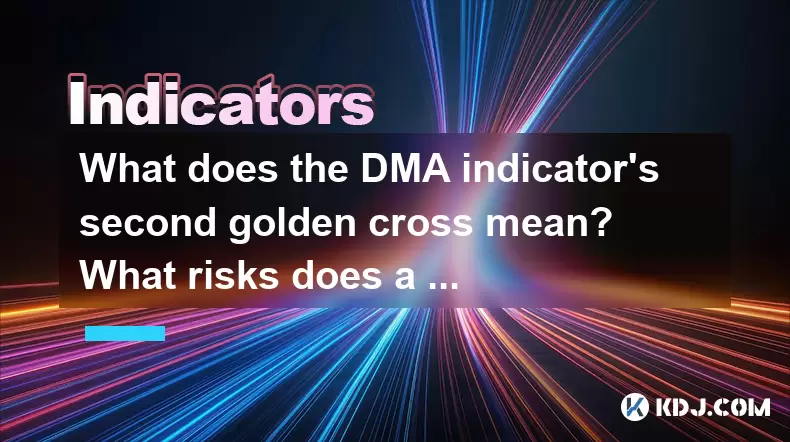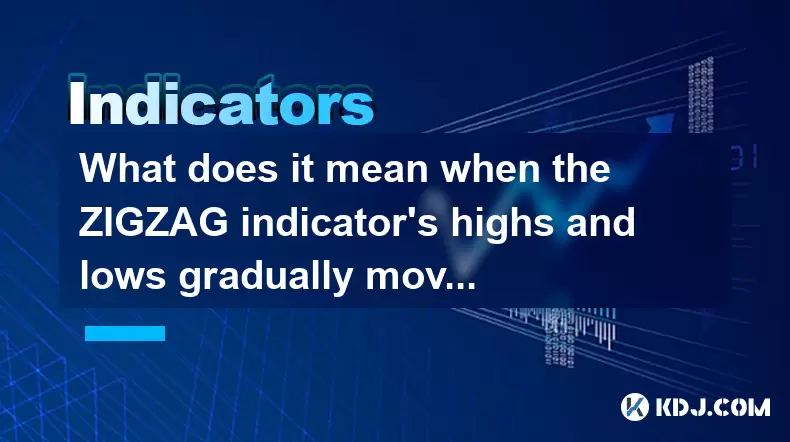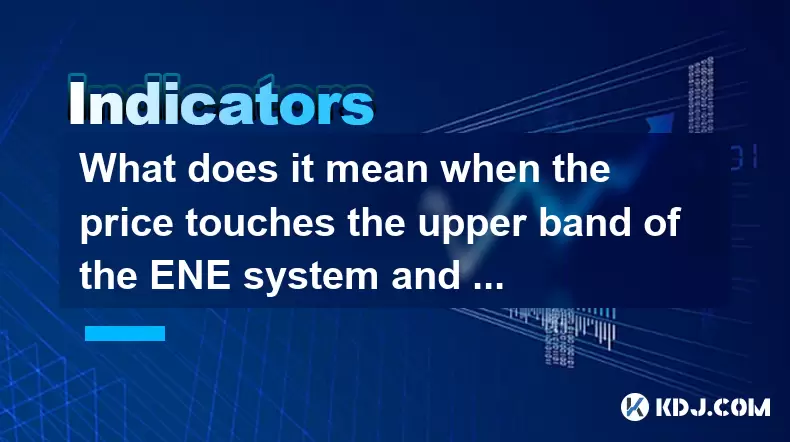-
 Bitcoin
Bitcoin $116600
0.11% -
 Ethereum
Ethereum $4235
4.72% -
 XRP
XRP $3.283
0.22% -
 Tether USDt
Tether USDt $1.000
0.00% -
 BNB
BNB $805.4
1.59% -
 Solana
Solana $181.8
2.27% -
 USDC
USDC $0.9998
-0.01% -
 Dogecoin
Dogecoin $0.2450
7.90% -
 TRON
TRON $0.3363
-0.80% -
 Cardano
Cardano $0.8161
2.85% -
 Hyperliquid
Hyperliquid $43.68
6.68% -
 Chainlink
Chainlink $21.20
8.50% -
 Stellar
Stellar $0.4526
0.64% -
 Sui
Sui $3.949
3.12% -
 Bitcoin Cash
Bitcoin Cash $571.3
-2.83% -
 Hedera
Hedera $0.2656
1.45% -
 Avalanche
Avalanche $24.41
3.14% -
 Ethena USDe
Ethena USDe $1.001
0.03% -
 Litecoin
Litecoin $122.0
-2.03% -
 Toncoin
Toncoin $3.425
1.51% -
 UNUS SED LEO
UNUS SED LEO $9.004
0.19% -
 Shiba Inu
Shiba Inu $0.00001381
4.36% -
 Uniswap
Uniswap $10.93
0.05% -
 Polkadot
Polkadot $4.117
3.93% -
 Dai
Dai $1.000
0.02% -
 Pepe
Pepe $0.00001235
3.53% -
 Bitget Token
Bitget Token $4.507
0.36% -
 Cronos
Cronos $0.1570
2.05% -
 Monero
Monero $274.9
0.14% -
 Ethena
Ethena $0.7511
15.68%
What does the DMA indicator's second golden cross mean? What risks does a second dead cross imply?
The DMA indicator's second golden and dead crosses are advanced signals that confirm bullish or bearish trends, but traders must be wary of false signals and market volatility.
Jun 03, 2025 at 09:57 am

The DMA (Dual Moving Average) indicator is a technical analysis tool used by cryptocurrency traders to identify potential buy and sell signals based on the crossing of two moving averages. The second golden cross and the second dead cross are advanced signals that traders look for to make more informed trading decisions. This article will delve into the meanings of these signals, how to identify them, and the risks associated with them.
Understanding the DMA Indicator
The DMA indicator involves two moving averages, typically a short-term moving average and a long-term moving average. A golden cross occurs when the short-term moving average crosses above the long-term moving average, signaling a potential bullish trend. Conversely, a dead cross occurs when the short-term moving average crosses below the long-term moving average, indicating a potential bearish trend.
What is the Second Golden Cross?
The second golden cross refers to the second instance of a golden cross within a specific period. This signal is considered more significant than the first golden cross because it confirms the strength of the bullish trend. Traders often see this as a more reliable indicator of a sustained upward movement in the price of a cryptocurrency.
To identify a second golden cross:
- Monitor the price chart of the cryptocurrency you are interested in.
- Ensure you have the DMA indicator applied to your chart, with the short-term and long-term moving averages clearly visible.
- Observe the first golden cross, where the short-term moving average crosses above the long-term moving average.
- Continue to monitor the chart until you see the short-term moving average dip below the long-term moving average and then cross above it again. This second instance is the second golden cross.
Risks and Considerations of the Second Golden Cross
While the second golden cross can be a strong bullish signal, there are several risks and considerations that traders need to be aware of:
- False Signals: Even a second golden cross can be a false signal, leading to losses if the market does not continue its upward trend.
- Market Volatility: Cryptocurrency markets are highly volatile, and a second golden cross might not hold if there are significant market shifts due to external factors.
- Overbought Conditions: A second golden cross can sometimes occur in an overbought market, leading to a potential reversal soon after the signal.
What is the Second Dead Cross?
The second dead cross refers to the second instance of a dead cross within a specific period. This signal is considered more significant than the first dead cross because it confirms the strength of the bearish trend. Traders often see this as a more reliable indicator of a sustained downward movement in the price of a cryptocurrency.
To identify a second dead cross:
- Monitor the price chart of the cryptocurrency you are interested in.
- Ensure you have the DMA indicator applied to your chart, with the short-term and long-term moving averages clearly visible.
- Observe the first dead cross, where the short-term moving average crosses below the long-term moving average.
- Continue to monitor the chart until you see the short-term moving average rise above the long-term moving average and then cross below it again. This second instance is the second dead cross.
Risks and Considerations of the Second Dead Cross
The second dead cross, while a strong bearish signal, comes with its own set of risks and considerations:
- False Signals: Just like the second golden cross, a second dead cross can be a false signal, leading to losses if the market does not continue its downward trend.
- Market Volatility: The inherent volatility of cryptocurrency markets can cause a second dead cross to fail if there are significant market shifts due to external factors.
- Oversold Conditions: A second dead cross can sometimes occur in an oversold market, leading to a potential reversal soon after the signal.
Practical Application of the DMA Indicator
Traders use the DMA indicator in various ways to make informed decisions. Here’s how you can apply the second golden cross and second dead cross in your trading strategy:
- Entry and Exit Points: Use the second golden cross as a signal to enter a long position, anticipating a continued upward trend. Conversely, use the second dead cross as a signal to enter a short position or exit a long position.
- Stop-Loss Orders: Set stop-loss orders to manage risk when trading based on these signals. For a second golden cross, place a stop-loss below the recent low. For a second dead cross, place a stop-loss above the recent high.
- Confirmation with Other Indicators: Always use the DMA indicator in conjunction with other technical analysis tools to confirm signals. For instance, look for confirmation from volume indicators, RSI (Relative Strength Index), or MACD (Moving Average Convergence Divergence).
Examples of the Second Golden Cross and Second Dead Cross in Action
To better understand how these signals work, let’s look at a couple of hypothetical examples:
- Second Golden Cross Example: Suppose you are monitoring Bitcoin (BTC) and notice that the 50-day moving average (short-term) crosses above the 200-day moving average (long-term) in early January. A few weeks later, the 50-day moving average dips below the 200-day moving average briefly and then crosses above it again. This second golden cross suggests a strong bullish trend, and you decide to enter a long position.
- Second Dead Cross Example: Imagine you are tracking Ethereum (ETH) and observe that the 50-day moving average crosses below the 200-day moving average in mid-March. After a brief recovery, the 50-day moving average crosses below the 200-day moving average again. This second dead cross indicates a strong bearish trend, and you decide to enter a short position or exit any long positions.
Frequently Asked Questions
Q: Can the DMA indicator be used effectively in all market conditions?
A: The DMA indicator can be useful in various market conditions, but its effectiveness depends on the overall market volatility and trends. In highly volatile markets, false signals can be more common, so it's crucial to use the DMA in conjunction with other indicators for confirmation.
Q: How do I choose the right time frame for the moving averages in the DMA indicator?
A: The choice of time frame for the moving averages depends on your trading style. For short-term trading, you might use a 10-day and 30-day moving average. For long-term trading, a 50-day and 200-day moving average might be more suitable. Experiment with different time frames to find what works best for your strategy.
Q: What other technical indicators should I use alongside the DMA to improve my trading decisions?
A: To improve your trading decisions, consider using the following indicators alongside the DMA:
- Volume Indicators: High volume can confirm the strength of a trend signaled by the DMA.
- RSI (Relative Strength Index): Helps identify overbought or oversold conditions, which can complement the DMA signals.
- MACD (Moving Average Convergence Divergence): Can provide additional confirmation of trend changes and momentum.
Q: How often should I check for the second golden cross and second dead cross?
A: The frequency of checking for these signals depends on your trading strategy. For day traders, checking multiple times a day might be necessary. For swing traders, checking daily or weekly might suffice. Always ensure that you have a disciplined approach to monitoring your charts.
Disclaimer:info@kdj.com
The information provided is not trading advice. kdj.com does not assume any responsibility for any investments made based on the information provided in this article. Cryptocurrencies are highly volatile and it is highly recommended that you invest with caution after thorough research!
If you believe that the content used on this website infringes your copyright, please contact us immediately (info@kdj.com) and we will delete it promptly.
- Solana Meme Coin Presales: Hype or the Next Big Thing?
- 2025-08-10 02:50:12
- Pi Network, Altcoin Season, and Breakout Tokens: What's Hot in 2025?
- 2025-08-10 02:50:12
- Decoding Crypto Presales: Is Cold Wallet the New Neo Pepe?
- 2025-08-10 02:30:12
- Cryptos, 2025, Market Caps: Riding the Next Wave
- 2025-08-10 02:30:12
- Trump, Crypto Vehicle, and WLFI Tokens: A New York Minute on the Latest Buzz
- 2025-08-10 00:30:12
- Wheat Penny Fortune: Unearthing Valuable Coins in Your Pocket Change
- 2025-08-10 00:35:19
Related knowledge

What does it mean when the price is trading above the SAR indicator but the red dots are densely packed?
Aug 09,2025 at 11:49pm
Understanding the SAR Indicator and Its Visual SignalsThe SAR (Parabolic Stop and Reverse) indicator is a technical analysis tool used primarily to de...

What does it mean when the MACD histogram continues to shorten but the price reaches a new high?
Aug 09,2025 at 09:29pm
Understanding the MACD Histogram and Its ComponentsThe MACD (Moving Average Convergence Divergence) indicator is a widely used technical analysis tool...

What does it mean when the Triple Moving Average (TRIX) turns downward but the price doesn't fall?
Aug 09,2025 at 12:42pm
Understanding the Triple Moving Average (TRIX) IndicatorThe Triple Moving Average, commonly known as TRIX, is a momentum oscillator designed to filter...

What does it mean when the 10-day and 30-day moving averages repeatedly intertwine?
Aug 10,2025 at 02:42am
Understanding Moving Averages in Cryptocurrency TradingMoving averages are among the most widely used technical indicators in the cryptocurrency tradi...

What does it mean when the ZIGZAG indicator's highs and lows gradually move downwards?
Aug 10,2025 at 02:14am
Understanding the ZIGZAG Indicator in Cryptocurrency TradingThe ZIGZAG indicator is a popular technical analysis tool used by cryptocurrency traders t...

What does it mean when the price touches the upper band of the ENE system and then falls back?
Aug 10,2025 at 12:42am
Understanding the ENE Indicator StructureThe ENE (Envelope) indicator is a technical analysis tool used in cryptocurrency trading to identify potentia...

What does it mean when the price is trading above the SAR indicator but the red dots are densely packed?
Aug 09,2025 at 11:49pm
Understanding the SAR Indicator and Its Visual SignalsThe SAR (Parabolic Stop and Reverse) indicator is a technical analysis tool used primarily to de...

What does it mean when the MACD histogram continues to shorten but the price reaches a new high?
Aug 09,2025 at 09:29pm
Understanding the MACD Histogram and Its ComponentsThe MACD (Moving Average Convergence Divergence) indicator is a widely used technical analysis tool...

What does it mean when the Triple Moving Average (TRIX) turns downward but the price doesn't fall?
Aug 09,2025 at 12:42pm
Understanding the Triple Moving Average (TRIX) IndicatorThe Triple Moving Average, commonly known as TRIX, is a momentum oscillator designed to filter...

What does it mean when the 10-day and 30-day moving averages repeatedly intertwine?
Aug 10,2025 at 02:42am
Understanding Moving Averages in Cryptocurrency TradingMoving averages are among the most widely used technical indicators in the cryptocurrency tradi...

What does it mean when the ZIGZAG indicator's highs and lows gradually move downwards?
Aug 10,2025 at 02:14am
Understanding the ZIGZAG Indicator in Cryptocurrency TradingThe ZIGZAG indicator is a popular technical analysis tool used by cryptocurrency traders t...

What does it mean when the price touches the upper band of the ENE system and then falls back?
Aug 10,2025 at 12:42am
Understanding the ENE Indicator StructureThe ENE (Envelope) indicator is a technical analysis tool used in cryptocurrency trading to identify potentia...
See all articles

























































































